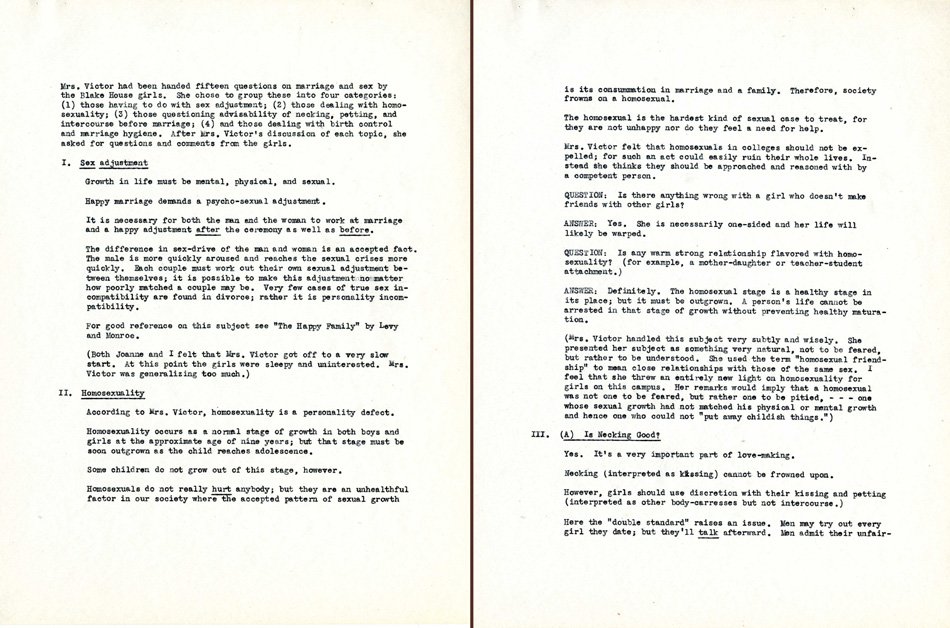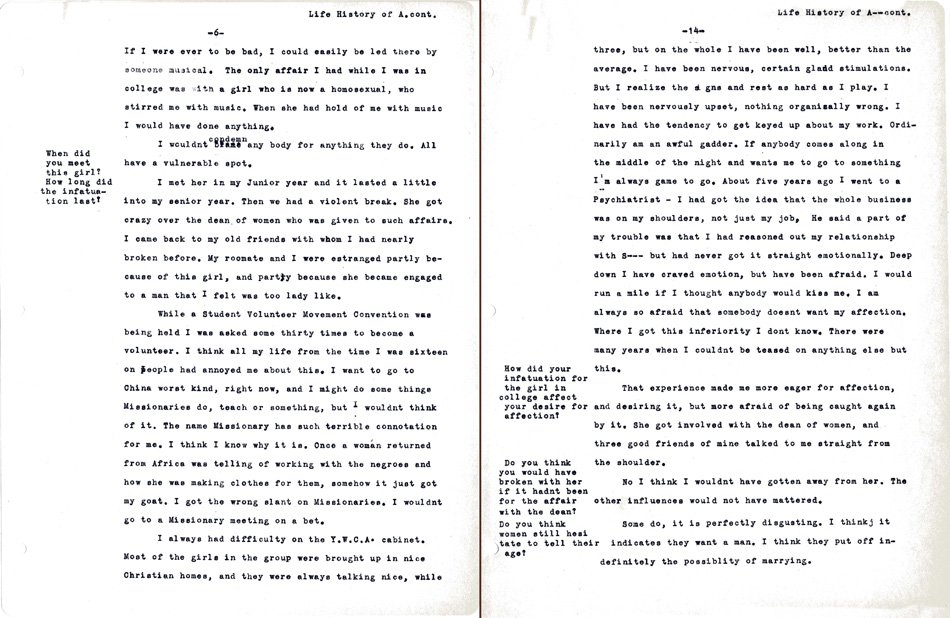Women's Relationships at the early University
Professional women at the turn of the twentieth century often found it easier to achieve their goals outside of heterosexual marriage. Many chose to pursue close emotional, financial, and sometimes sexual partnerships with other women in what was then called a "Boston marriage."
Attitudes toward female homosexuality were also changing rapidly in this period, such that the relationships documented in this case may have been more acceptable to the outside world when they started than when they ended. By the late 1920s and 1930s, close relationships between women were increasingly taken to imply a "disordered" homosexual identity, and a 1929 case study by a Sociology student shows that Marion Talbot was known for having "such affairs." Some women may have embraced a certain amount of strategic ambiguity in order to escape scrutiny and stigma.
In her 1929 study, Katherine Bement Davis (PhD 1900) found that 46.2% of women born in the late 19th century reported homosexual experiences, but only 21.4% of women born in the first decade of the 20th century did. What might account for this decline? The transcript of a sex education session in a women's dormitory in 1947 spells out a new outlook on relationships between women: female homosexuality might be acceptable as a developmental phase, but if kept up for too long, it was evidence of an immature personality.
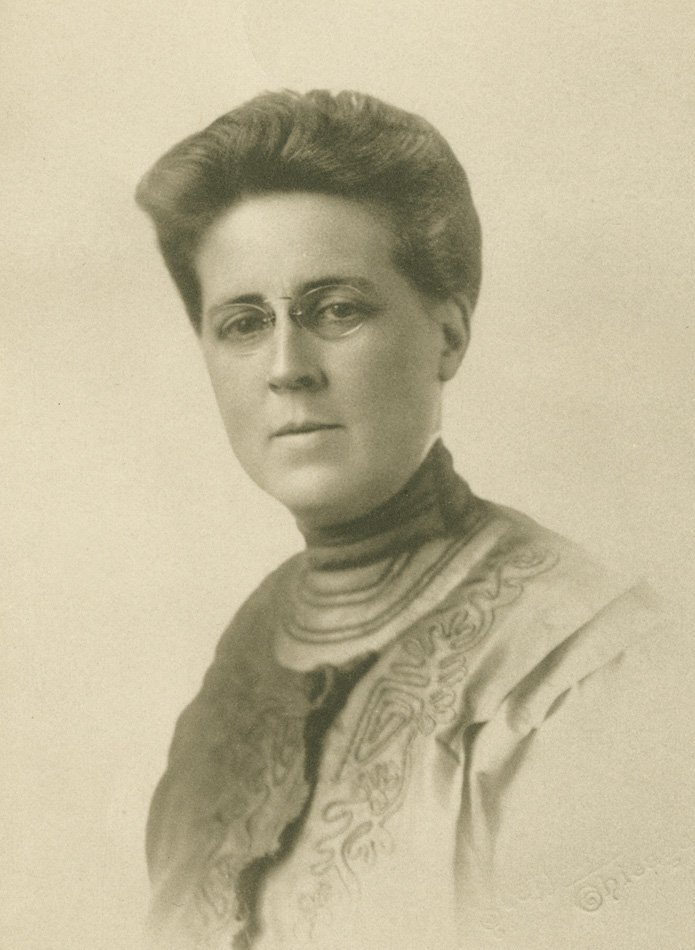
Photograph, undated
University of Chicago Photographic Archive, apf1-05882
Gertrude Dudley, Director of Women's Athletics, co-wrote Athletic Games in the Education of Women (1909) with Frances Kellor, a former lover. Kellor was one of the first women graduate students in Sociology, and was hired by Dudley as a gymnastics instructor, Their book argued that playing sports could make women more engaged citizens. Dudley founded the first competitive women's athletics program in the nation while at the University. In a letter Dudley wrote to Alonzo Stagg, then Director of Athletics, she makes light of her lack of experience with men.
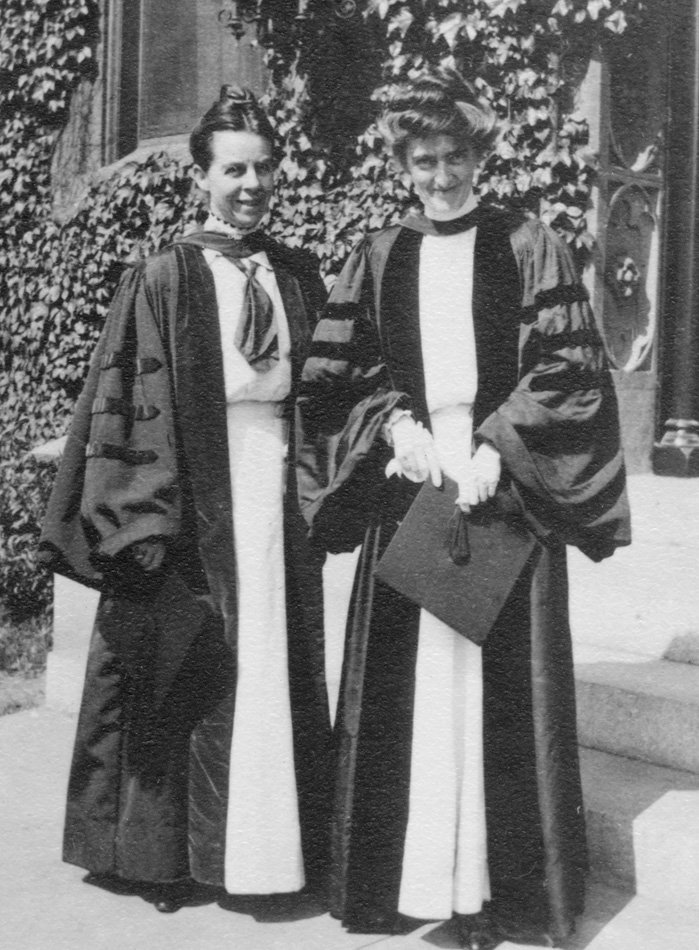
Photograph, 1909
University of Chicago Photographic Archive, apf1-02248
At the University of Chicago, Marion Talbot, head of the Department of Household Administration and Dean of Women, encouraged Sophonisba Breckinridge to pursue graduate study. Breckinridge became the first woman to earn a Political Science PhD (1901) and a JD (1904) at the University.
Talbot later secured Breckinridge a position as an instructor and as her assistant. The two were inseparable. One student remembered "Little Miss Breckinridge trudging along over a few blocks to see Miss Talbot. She went every night to see her." Talbot's parents gave the family home to both women in 1912.

Photograph, 1930s
University of Chicago Photographic Archive, apf1-00008
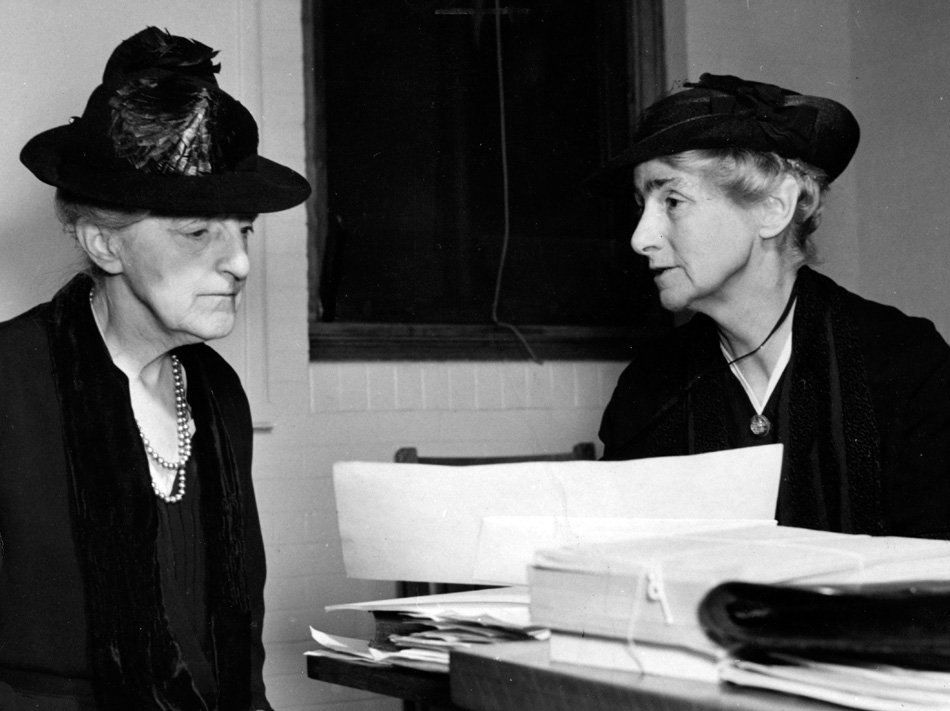
Photograph, undated
University of Chicago Photographic Archive, apf1-02249
After Edith Abbott arrived on campus in 1905, working with Breckinridge and eventually becoming Dean of the School of Social Service Administration in 1924, the two women grew closer. Abbott and Talbot seem to have fought over Breckinridge's affections, as documented in a series of letters from 1911.
Breckinridge remained close to Talbot – writing letters about her "dear legs" in the 1930s—but gradually merged her life with Abbott's. While on vacation, she wrote Abbott twice a day: "Edith, when you get back, and I get back, don't let me go again. I can't get along without you." Breckenridge and Abbott would live together by the 1940s.
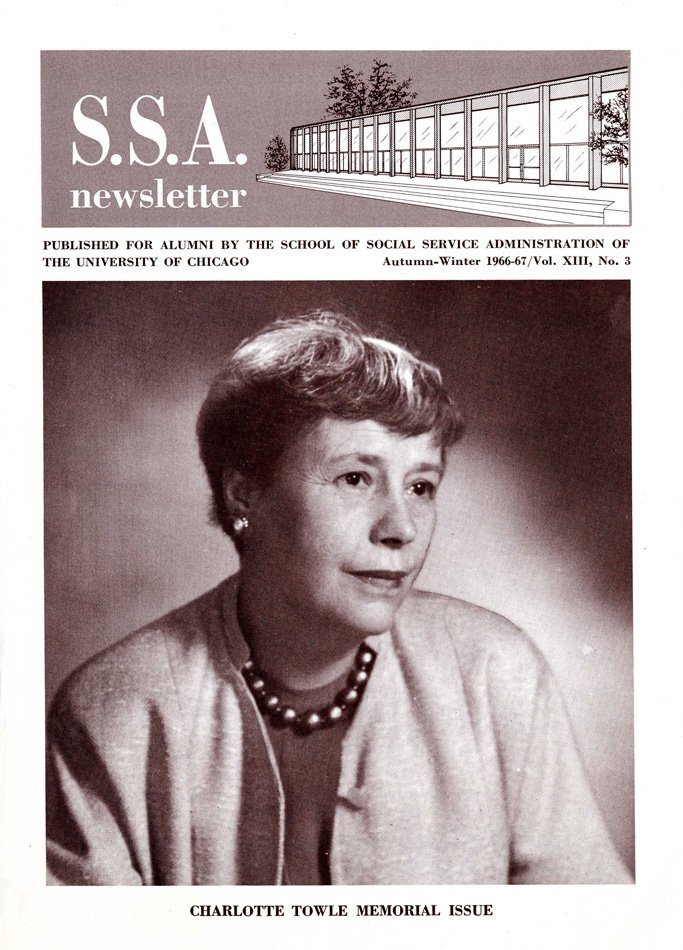
Chicago: The School of Social Service Administration, 1967
Charlotte Towle Papers
Social workers Charlotte Towle and Mary Rall lived together in Hyde Park for over thirty years beginning in the 1930s. Their friends and family recognized and supported their relationship. The SSA Newsletter issue on Charlotte's death spends more time on her love of dogs than on Mary, who is euphemistically named as "closest friend and companion."
